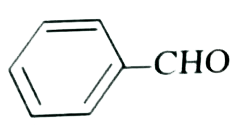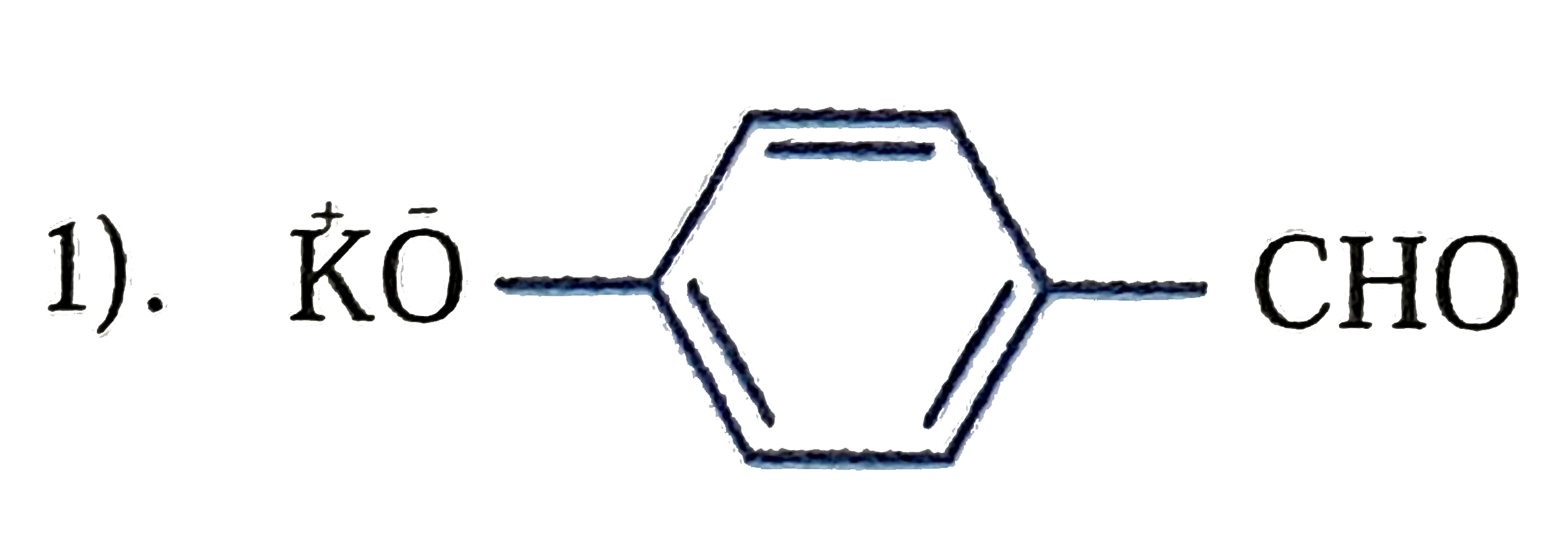An organic compound (A) contains 40% carbon 6.7% hydrogen and rest, oxygen. Its vapour density is 15. On reacting with a concentrated solution of KOH, it gives two compounds, (B) and (C ). When (B) is oxidised, the original compound (A) is obtained. When (C ) is treated with concentrated HCl, it gives a compound (D) which reduces Fehling's solution as well as ammoniacal AgNO3 solution and also gives effervescence with NaHCO3 solution. Write the structures of (A), (B), (C ) and (D)
Moles of C:H:O in (A)=4012:6.71:53.316
=3.33:6.7:3.33
=1:2:1
Empirical formula of (A) is CH2O (30)
As molecular weight of (A) is also equal to 30 (i.e., 2×VD), molecular formula of (A) is CH2O.
Now from the following reaction sequence
(A)KOH−−→(B)+(C)(CH2O)⏐↓(O)↓HCl(A)(D)(CH2O)reduces Fehling.s solution and ammAgNO3and gives effervescence withNaHCO3
It is clear that, (A) is HCHO (B) is CH3OH ( C) is HCOOK and (D) is HCOOH
Topper's Solved these Questions
- BOOK - RC MUKHERJEECHAPTER - EMPIRICAL, MOLECULAR AND STRUCTURAL FORMULAEEXERCISE - Problems46videos
EMPIRICAL, MOLECULAR AND STRUCTURAL FORMULAE
- BOOK - RC MUKHERJEECHAPTER - ELEMENTARY PROBLEMS BASED ON DEFINITION OF MOLE: THE MOLE CONCEPT EXERCISE - OBJECTIVE PROBLEMS29videos
ELEMENTARY PROBLEMS BASED ON DEFINITION OF MOLE: THE MOLE CONCEPT
- BOOK - RC MUKHERJEECHAPTER - ESTIMATION OF ELEMENTS IN ORGANIC COMPOUNDSEXERCISE - Problems13videos
ESTIMATION OF ELEMENTS IN ORGANIC COMPOUNDS
Similar Questions
Knowledge Check
- Question 1 - Select One
Which product is formed when the compound
 is treated with concentrated aqueous KOH solution?A
is treated with concentrated aqueous KOH solution?A B
B C
C D
D
- Question 2 - Select One
Which product is formed when the compound

is treated with concentrated aqueous KOH solutionA B
B C
C D
D
- Question 3 - Select One
Which product is formed when the compound is treated with concentrated aqueous KOH solution ?
A B
B C
C D
D
Which product is formed when the compound is treated with concentrated aqueous KOH solution ?
View SolutionA compound contains 40% carbon 6.6% hydrogen and the rest oxygen. If 100 ml of its decimolar solution contains 1.8 gms of it, how many emperical units are present in its molecule?
View SolutionAn organic compound (A) containing 60.12% (C ) and 13.3% H has vapour density of 30. On oxidation it gives (B) (C3H6O) which on further oxidation by NaOH and I2 gives compound (C ) (C2H3O2Na). When (B) is treated with hydroxylamine, a compound (D) (C3H7NO) is formed. what are (A), (B), (C ) and (D) ?
View SolutionAn oxygen containing organic compound was found to contain 52% carbon and 13% of hydrogen. Its vapour density is 23. The compound reacts with sodium metal to liberate hydrogen. A functional isomer of this compound is
View SolutionAn oxygen containing organic compound was found to contain 52% carbon and 13% of hydrogen. Its vapour density is 23. The compound reacts with sodium metal to liberate hydrogen. A functional isomer of this compound is
View Solution

